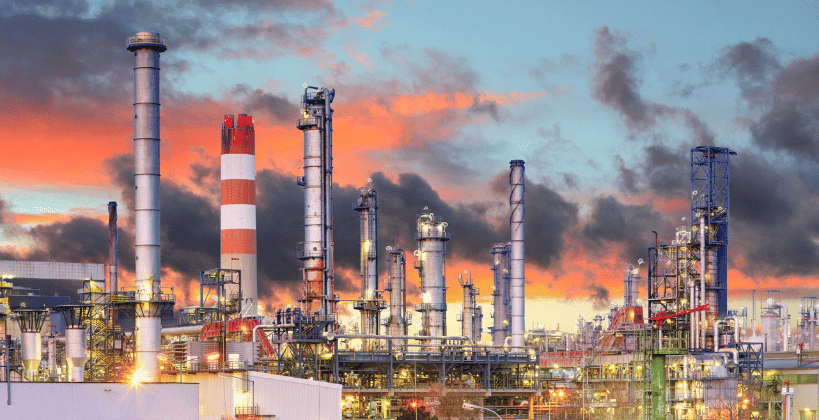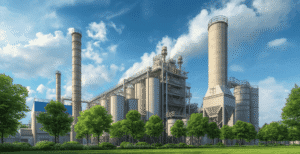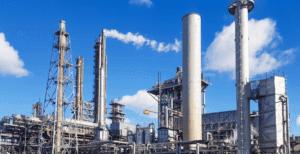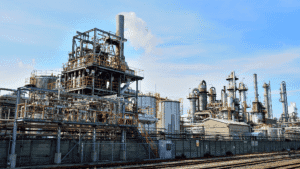Dust Extraction Systems: Why They Matter
Industrial operations—from cement production and metallurgy to pharmaceuticals and food processing—generate dust that is more than a nuisance. Fine particulates can cause respiratory issues, compromise product quality, damage machinery, and result in regulatory penalties. Dust extraction systems are engineered to capture, contain, and remove these airborne contaminants, turning a health and compliance problem into an operational advantage.
Proper dust extraction improves worker safety, prolongs equipment life, reduces energy costs, and ensures consistent product quality. Modern industries no longer treat dust management as optional—it is an essential component of operational excellence.
Understanding How Dust Extraction Works
Dust extraction systems are engineered to efficiently separate airborne particulates from industrial processes and safely manage their disposal, ensuring a cleaner and safer workspace. The process begins with collection, where dust-laden air is captured right at the source using specialized hoods, nozzles, or enclosed workstations. Capturing dust as close to its origin as possible prevents it from dispersing into the surrounding environment, protecting workers and minimizing contamination of sensitive processes.
Once captured, the dust is transported through a network of ducts or pipes to the central filtration unit. Controlled airflow is critical at this stage, as it ensures consistent dust movement without blockages or turbulence that could reduce efficiency. Proper duct design also minimizes energy consumption while maintaining optimal velocity for dust transport.
The heart of the system is filtration, where airborne particulates are separated from the air stream. Depending on the type and size of the dust, filtration may occur through baghouses, cartridge filters, cyclones, or electrostatic precipitators. High-efficiency filters can capture particles as small as submicron levels, making them essential for industries like pharmaceuticals, electronics, and chemical processing.
After filtration, dust moves to the disposal stage. Here, it is collected in hoppers, bins, or other containment units designed for safe removal, recycling, or reprocessing. This step is especially important for hazardous or combustible dust, which requires airtight, controlled handling to prevent workplace accidents.
Finally, clean air is returned to the facility or safely vented outside, ensuring compliance with local and international emission standards. Modern systems often include real-time monitoring to track airflow, pressure drops, and particulate levels, allowing for proactive maintenance and ensuring long-term performance.
The design and configuration of a dust extraction system are highly dependent on several factors, including particle size, density, chemical properties, moisture content, and production volume. Tailoring the system to these parameters ensures maximum efficiency, reduced downtime, and protection of both personnel and equipment.
Mga Uri ng Dust Extraction System
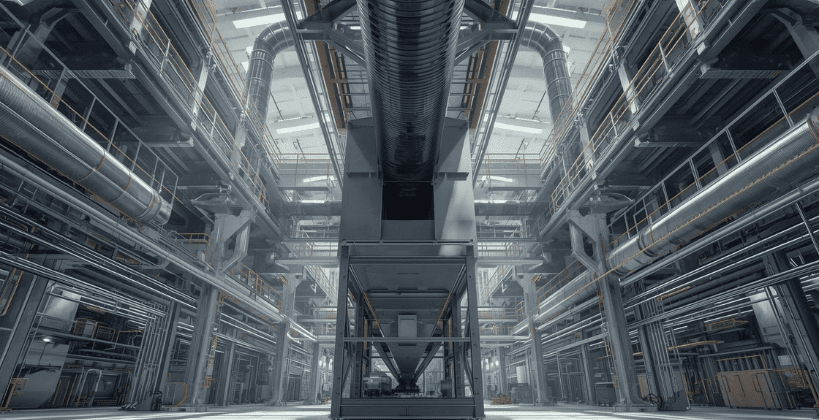
Mga Cyclone Separator
Cyclone separators leverage centrifugal force to remove larger dust particles from air streams. While less effective for ultrafine dust, they are excellent as pre-filters to reduce the load on finer filtration units. Industries like cement, biomass, and bulk materials frequently use cyclones for cost-effective preliminary dust removal.
Baghouse Dust Collectors
Baghouses remain the industrial standard for high-efficiency dust collection. Air passes through fabric filter bags that trap particles as small as 1 micron. Pulse-jet cleaning mechanisms periodically shake or blow accumulated dust off the bags, maintaining efficiency without halting operations. Baghouse systems are widely used in cement, metal, chemical, and power industries.
Mga Filter ng Cartridge
Compact cartridge filters with pleated elements are ideal for fine dust or small footprint applications. They provide a large filtration surface area and are common in pharmaceuticals, electronics, and food processing, where submicron dust control is essential.
Mga Electrostatic Precipitator (ESP)
ESPs electrically charge particles, causing them to adhere to oppositely charged plates. They can remove particles down to 0.01 microns and are favored in power plants, steel mills, and cement kilns with high-volume flue gases.
Mga Basang Scrubber
Wet scrubbers remove dust using liquids. Venturi scrubbers atomize water or chemical solutions to capture sticky or corrosive particulates. They are suited for chemical plants, incinerators, and environments with high-temperature or moisture-laden dust.
Features of Advanced Dust Extraction Systems
- Mga Filter na Mataas ang Kahusayan: Modern dust extraction systems use ePTFE, HEPA, or multi-layered filter media capable of capturing submicron particles with over 99.9% efficiency. These filters are engineered to handle sticky, fine, or abrasive dust without rapid clogging, ensuring consistent air quality and compliance with stringent emission norms.
- Paglilinis ng Pulse-Jet: Automated pulse-jet systems periodically blast compressed air through the filters, dislodging accumulated dust and maintaining optimal airflow. This reduces manual maintenance, extends the filter lifespan, and ensures uninterrupted operation even in high-dust environments.

- Smart Sensors: Integrated sensors continuously monitor key parameters such as differential pressure, airflow, and filter performance. Real-time data enables predictive maintenance, alerts operators to potential blockages, and ensures system efficiency while reducing downtime.
- Modular Construction: Advanced systems are designed with modular components, allowing facilities to scale or upgrade their dust extraction setup without halting operations. This flexibility is particularly valuable for growing industrial plants or processes with changing production requirements.
- Explosion Relief Panels: In environments handling combustible dust, safety is critical. Explosion relief panels, venting systems, and isolation valves mitigate the risk of pressure surges or deflagrations, protecting both personnel and equipment from potential accidents.
- Energy-Optimized Fans: Variable frequency drive (VFD) fans adjust airflow dynamically based on system resistance, reducing energy consumption by up to 30% while maintaining the required ventilation rate. This energy-efficient operation lowers operational costs and contributes to sustainable industrial practices.
Benefits of Implementing a Dust Extraction System
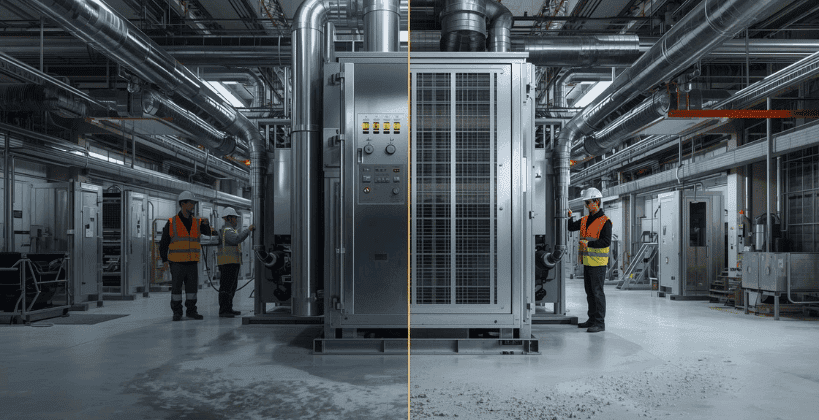
A modern dust extraction system provides far more than just regulatory compliance—it represents a strategic investment in operational efficiency, safety, and sustainability. By effectively capturing airborne dust, these systems protect employees from respiratory issues and the long-term health risks associated with prolonged exposure to fine particulates. At the same time, they help extend the lifespan of industrial equipment by minimizing wear and tear caused by abrasive dust particles. In industries where product quality is critical, such as pharmaceuticals, electronics, and food processing, dust extraction prevents contamination and ensures consistent output. Furthermore, advanced systems support regulatory compliance, ensuring emission levels remain within global standards, including those set by the CPCB, OSHA, and EU directives. Beyond safety and compliance, modern dust extraction improves operational efficiency by reducing downtime and maintenance requirements, optimizing production throughput. Smart airflow management and clean, high-performance filters also contribute to significant energy savings, lowering operational costs while supporting sustainable manufacturing practices.
Intensiv Filter Himenviro: Global Expertise in Dust Extraction
Intensiv Filter Himenviro has delivered thousands of dust extraction systems across the globe, serving industries with diverse dust challenges. Our solutions are tailored to:
- High-temperature environments up to 300°C or more.
- Chemically aggressive and corrosive dust streams.
- Combustible and ultrafine particulate control.
- IoT-enabled monitoring for predictive maintenance and operational transparency.
We provide customized baghouse systems, hybrid ESP solutions, cyclone pre-separators, cartridge filters, and wet scrubbers to meet the exact demands of your industrial process. Every system is engineered for efficiency, reliability, and compliance with the strictest international emission standards.
Future of Dust Extraction Systems
As industries evolve, dust extraction systems are becoming more intelligent and integrated. Trends include:
- IoT-enabled monitoring: Real-time performance tracking and predictive maintenance alerts.
- Hybrid systems: Combining baghouses with ESPs or wet scrubbers for multi-stage filtration.
- Energy-efficient designs: Variable speed drives, optimized duct layouts, and reduced pressure drops.
- Sustainable filter media: Longer lifespan, recyclable, and resistant to harsh chemicals.
These innovations not only improve air quality but also support ESG initiatives, reduce operational costs, and future-proof industrial facilities.
Pangwakas na Kaisipan
Dust extraction systems are no longer optional—they are essential for modern, high-performing, and compliant industrial operations. A well-engineered system protects people, equipment, and products while optimizing efficiency and energy use.
Partnering with Intensiv Filter Himenviro ensures you have a globally trusted solution that delivers maximum performance, regulatory compliance, and operational sustainability. Upgrade your facility today and experience the transformative impact of intelligent dust extraction technology.
Tuklasin ang Aming Saklaw ng Mga Solusyon:
Mga Madalas Itanong
A dust extraction system is an engineered setup designed to capture, filter, and remove airborne dust and particulates generated during industrial processes. It is important because it ensures worker safety, protects equipment, maintains product quality, and keeps facilities compliant with environmental and occupational health regulations.
Industries with high particulate generation, including cement, metallurgy, power plants, pharmaceuticals, chemicals, food processing, woodworking, textiles, and waste management, rely heavily on dust extraction systems.
- Cyclone separators – for larger dust particles.
- Baghouse collectors – for fine and heavy dust loads.
- Cartridge filters – for compact spaces and fine dust.
- Electrostatic precipitators (ESPs) – for ultrafine particles in large flue gas volumes.
- Wet scrubbers – for sticky, corrosive, or high-moisture dust.
